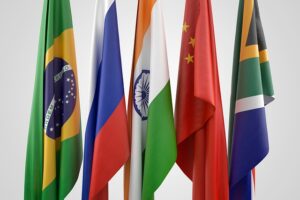Eid ul-Fitr 2024: Embracing Blessings and Spreading Love Focus
Eid ul Fitr, often referred to as the “Festival of Breaking the Fast,” is not just a celebration but a global emblem of peace and brotherhood. It marks the conclusion of Ramadan, the holy month of fasting, reflection, and prayer. Let’s delve deeper into its meaning and importance.

1 . Eid ul-Fitr Completion of Ramadan Fasting
As the crescent moon heralds the arrival of Eid ul Fitr, homes brim with joy and anticipation. Children, wide-eyed and eager, chatter about the day’s festivities, their laughter a melody that dances through the air. They speak of new clothes, the shimmering hues of Eid outfits catching the sunlight in a dazzling display of celebration.
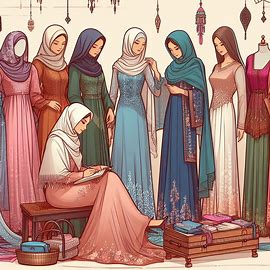
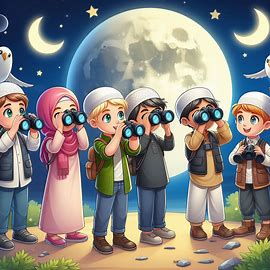
Ladies, with skilled hands, prepare the feast, the aromas of spiced dishes and sweet treats mingling in a warm embrace. There’s a rhythm to their work, a harmony of tradition and love that weaves through each gesture. The kitchen becomes a place of shared stories and secret recipes passed down through
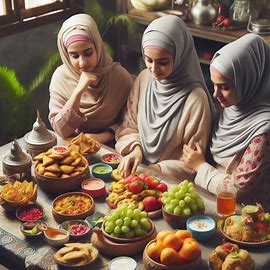
generations.
Together, they await the dawn of Eid, a day not just of feasting and fun, but of gratitude and giving, a reflection of a month dedicated to faith and reflection. The excitement is palpable, a current that connects each heart, each soul, in the shared experience of a sacred time renewed.

As twilight deepens and the day bids farewell,
A slender arc in the heavens begins to swell.
The first crescent of Eid, a silver bow so slight,
Hangs above, a beacon of soft, glowing light.
It whispers of blessings, of a month well-spent,
Of prayers and charity, of heart’s content.
A symbol of hope, of new beginnings so bright,
The first crescent of Eid graces the night.
Eid ul-Fitr marks the end of Ramadan, the holy month of fasting observed by Muslims. Throughout Ramadan, believers abstain from food, drink, and other physical needs during daylight hours. It is a time of spiritual reflection, self-discipline, and increased devotion.
The significance lies in the successful completion of this rigorous fasting period. Muslims celebrate Eid ul-Fitr as a reward for their dedication and piety during Ramadan.
2 . Joy and Gratitude:
After the Eid prayers, embrace your family and friends warmly. Say “Eid Mubarak” (meaning “Blessed Eid”) and share heartfelt hugs. These connections strengthen bonds and spread love.
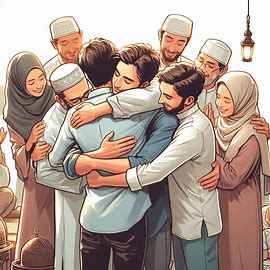
– Eid ul-Fitr is a time of celebration and thanksgiving. After a month of self-restraint, Muslims express their joy and gratitude to Allah for the strength to fulfill their religious obligations.
Families come together, friends exchange greetings, and communities celebrate as a collective expression of happiness.
3 . Acts of Charity and Generosity:
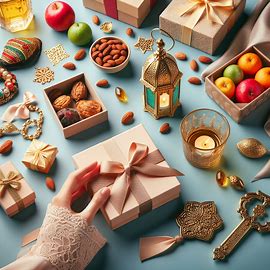
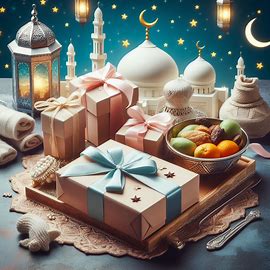
One of the core aspects of Eid ul-Fitr is charity. Muslims are encouraged to give Zakat al-Fitr, a form of almsgiving, before the Eid prayers. This ensures that even the less fortunate can partake in the festivities.
By sharing their blessings with others, Muslims reinforce the spirit of compassion and empathy.
4 . New Beginnings and Renewal:
Eid ul-Fitr represents a fresh start. It is a time to cleanse the heart, seek forgiveness, and renew one’s faith. Muslims wear new clothes, symbolizing a new beginning and a commitment to living a righteous life.
5 . Eid ul-Fitr Community Bonding
The day fosters a sense of community. Families and friends visit one another, share meals, and exchange gifts. The communal prayers (ṣalāt) held at daybreak on the first day of Eid bring Muslims together, reinforcing their unity and common purpose.
6 . Visiting Graves of Relatives:
On Eid, Muslims visit the graves of their departed loved ones. This act serves as a reminder of mortality, encourages reflection, and reinforces the bond between the living and the deceased.
7 . Celebrating Eid ul Fitr with your family can be a joyful and memorable experience. Ways to celebrate this special occasion:
- Begin with Eid Prayers: Start the day by performing the Eid prayers together at a mosque or an open area. This is a time for spiritual reflection and community.
- Enjoy a Festive Breakfast: After the prayers, enjoy a special breakfast with traditional dishes like dates, seviyan (vermicelli noodles), or sheer khurma (a milky, soupy pudding).
- Dress in Your Best: Wear new or your best clothes to mark the occasion. It’s a tradition to look your best on Eid.
- Exchange Gifts: Give and receive gifts as a token of love and appreciation among family and friends.
- Prepare a Feast: Cook and share a grand meal with your family, featuring favorite dishes and sweet treats.
- Give to Charity: Embrace the spirit of giving by donating to those in need and practicing Zakat al-Fitr.
- Visit Relatives and Friends: Spend time visiting loved ones to strengthen bonds and share the joy of Eid.
- Engage in Fun Activities: Plan fun activities or games for the family to enjoy together.
- Reflect and Be Thankful: Take time to reflect on the blessings and express gratitude for the time spent with your family.
8 . Eid ul-Fitr A Time for Feasting and Sharing Delicious Food With Loved Ones.
Eid ul-Fitr, the joyous festival that marks the end of Ramadan, is a time for feasting and sharing delicious food with loved ones. Across various Muslim cultures, traditional dishes play a central role in celebrating this special occasion. Let’s explore some of the delightful foods enjoyed during Eid ul-Fitr:
- Baklava:
Origin: Although North Americans typically know phyllo pastry by its Greek name, the dough traces back to Turkic origins.
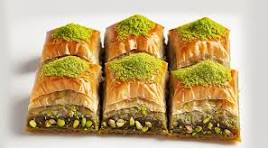
Description: Baklava is a sweet pastry made of layers of thin phyllo dough, generously filled with chopped nuts (often walnuts or pistachios) and sweetened with honey or syrup. It’s a labor of love, and some families, particularly those with Turkic and Balkan origins, still make it from scratch for Eid al-Fitr, passing down cherished family recipes through generations¹.
- Mango Custard:
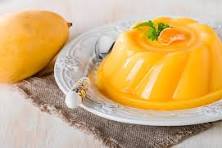
Popularity: Mango custard has become a beloved Eid al-Fitr delight, especially in Muslim countries where the love for mangos runs deep.
Ingredients: Mango pulp seamlessly replaces fresh fruit during off-seasons, and when combined with cake, it becomes a delightful mango trifle¹.
- Sweet Samosas:
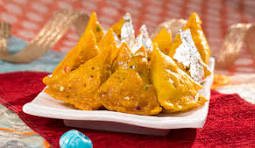
Sweet Samosas
Variations: In Morocco, these sweet treats are known as briouat, while in the Arabian Gulf, they go by the name sambusa halwa.
Preparation: Phyllo dough is shaped into triangular pockets and then stuffed with sweet fillings. Options include fruits like pears and apples or syrup-soaked nuts. Alternatively, phyllo might be rolled into a cigar shape and filled with a sweet cream, similar to a cannoli¹.
- Maamoul:
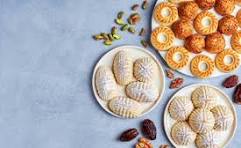
Maamoul
Description: Maamoul is a mouthwatering cookie filled with a variety of stuffings, such as pistachios, walnuts, or dates. These shortbread pastries are covered with powdered sugar, making them irresistible during Eid celebrations. You’ll find them in Lebanon, Egypt, Syria, and Palestine⁷.
- Kokoretsi:

Kokoretsi
Origin: Popular in Turkey.
Ingredients: Lamb or goat intestines wrapped around offal (such as sweetbreads or kidneys) and grilled. A unique and flavorful dish enjoyed during Eid al-Fitr².
- Haleem:
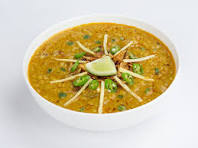
Haleem
Description: A slow-cooked stew made from meat, bulgur wheat, and lentils. It’s a hearty and comforting dish enjoyed in the Middle East, India, Pakistan, and Central Asia during Eid².
- Meat Pullaos:
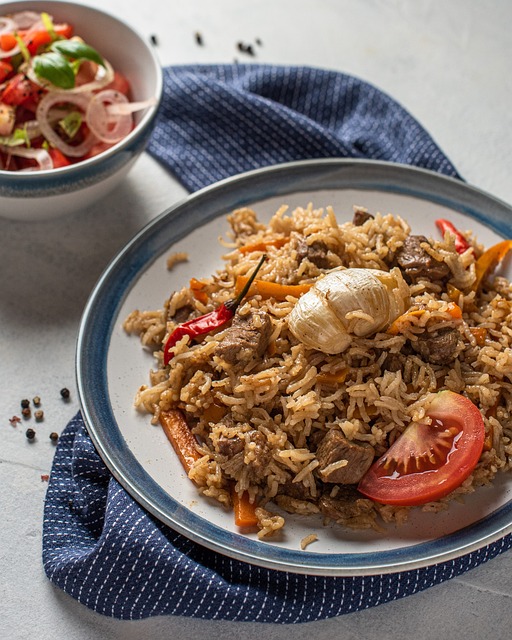
Meat Pullao
Ingredients: A rice and meat dish cooked in a flavorful broth. It’s a staple in Southeast Asia and India during Eid celebrations².
- Tufahije:
Ingredients: Poached apples filled with nuts and topped with whipped ice cream or crème fraîche. A delightful dessert enjoyed during Eid³.
Remember, these dishes vary from region to region, and each culture adds its unique twist to the celebration. Whether it’s baklava, mango custard, or sweet samosas, the spirit of sharing and gratitude makes every bite even more special during this special day
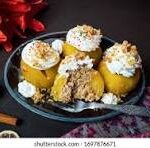
Remember, the essence of Eid is about togetherness, kindness, and sharing joy with your loved ones. Eid Mubarak!
In summary, Eid ul-Fitr is a time of joy, unity, and gratitude. It celebrates the completion of a month of fasting, encourages acts of kindness, and strengthens the bonds within the Muslim community.
Sources:
- [Britannica](https://www.britannica.com/topic/Eid-al-Fitr): “Eid al-Fitr | Definition, Meaning, Celebration, & Facts.” Last Updated: Mar 27, 2024.
- [Learn Religions](https://www.learnreligions.com/how-eid-al-fitr-is…): “The Meaning of Eid al-Fitr.”
- [Zamzam](https://zamzam.com/blog/eid-ul-fitr/): “Significance of Eid ul Fitr.”
- [We Ummat](https://weummat.com/what-is-eid-al-fitr/): “Eid al-Fitr in Islam: History, Traditions, Customs, and Festivities.”
- [Woman’s Day](https://www.womansday.com/…/eid-al-fitr-food-dishes/): “25 Traditional Eid al-Fitr Foods and Sweets Enjoyed Around the World.” Updated: Mar 15, 2024.
- The Food of Eid: The Ultimate Feast Day | The Kitchen. https://www.thekitchn.com/the-food-of-eid-the-ultimate….
If you enjoyed this article, please like and share it with your friends, and don’t forget to subscribe for more great content!


